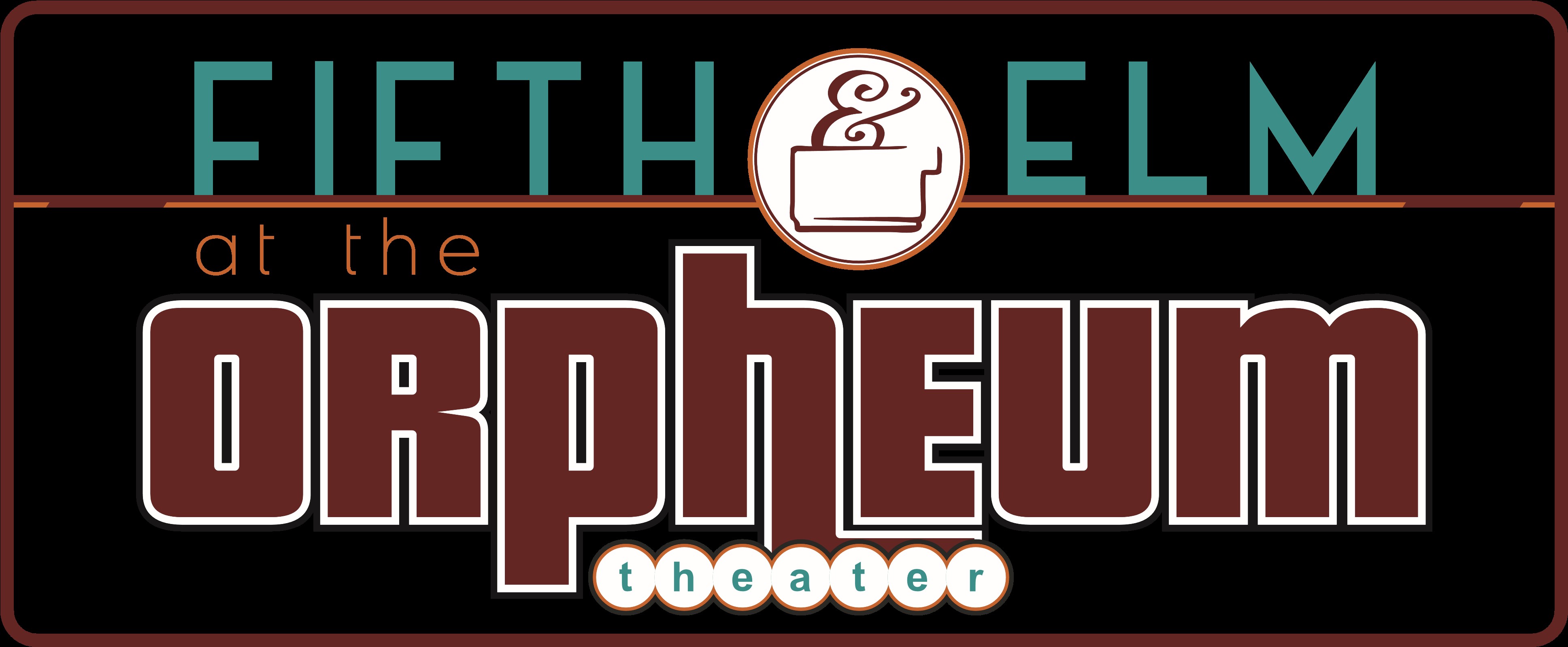
"Computational Sona-Kolam With Rainbow Loops," Digital art
Chloe McCarthy
Best in Show
"This computer-generated design is the first example produced in a computational and theoretical study of traditional African and Indian art in Dr. Robert Schneider’s discrete mathematics research group. In Central Africa there are diagrammatic designs called sona, usually drawn in sand by storytellers, which are composed of geometrically-arranged dots enclosed within winding loops. Produced by a simple algorithm, sona represent visually-gorgeous patterns of high complexity. Unfortunately, in the modern era the ancient sona art form has all but disappeared, with few if any practitioners. In South India, a very similar style of algorithmic art called kolam are drawn each morning using rice flour in front of almost every dwelling, traditionally created by women as an act of religious devotion. Kolam are ubiquitous in South India, an ever-evolving art form.
Viewing sona and kolam as mathematical objects, in our research group we wish to understand their combinatorial, number-theoretic, and knot-theoretic properties. We also wish to produce software to generate sona and kolam to produce beautiful imagery, and to produce numerous examples so that we may study their properties. This piece is our first step to understanding sona, by computationally generating rectangular cases of the diagrams. A graphical grid of a particular size is generated, and we store the location of every "contact point" (we limit our loops to moving through these contact points). Then, the loops are drawn as demonstrated through the contact points. Already, we obtained two results: 1) The GCD of the count of rows and columns gives us the number of unique loops in the diagram. 2) Starting at the top-most, left-most contact point, each distinct loop starts at the contact point immediately to the right of the previous loop. With these results, we can force certain behaviors and patterns from the diagrams; in this case, our setup forces 7 distinct loops, and colors them according to the rainbow."
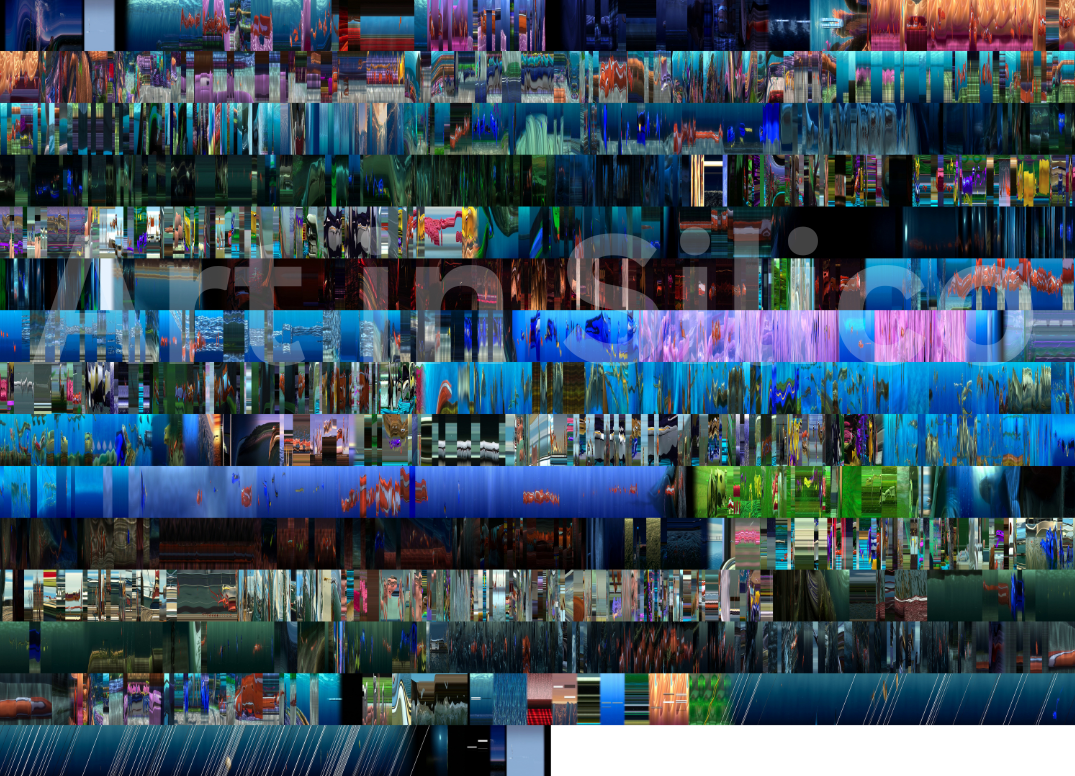
"Film Streaks"
Scott Kuhl
Most Creative
"Film Streaks are 2D images created from popular films using a simple algorithm. These images provide a glimpse into the color schemes, take length, camera movements and other aspects of the films. Each image is created by selecting a column of pixels and extracting that column from every frame. All of the columns are then placed side-by-side to create a long "streak" which can be read like a book from left to right and top to bottom. In the images, long takes of a stationary scene with little movement appear as long horizontal lines. Occasionally, when the camera pans across a scene slowly, images from the film may be visible. Text scrolling up in the credits appear as diagonal lines."
Artist Biography:
Scott Kuhl researches how to make virtual reality technologies, such as head-mounted displays, more useful and effective. He also advises Husky Game Development Enterprise where students work in interdisciplinary groups to create and release video games. His interests include computer graphics, open-source software, and human perception. He is an Associate Professor of Computer Science at Michigan Tech.
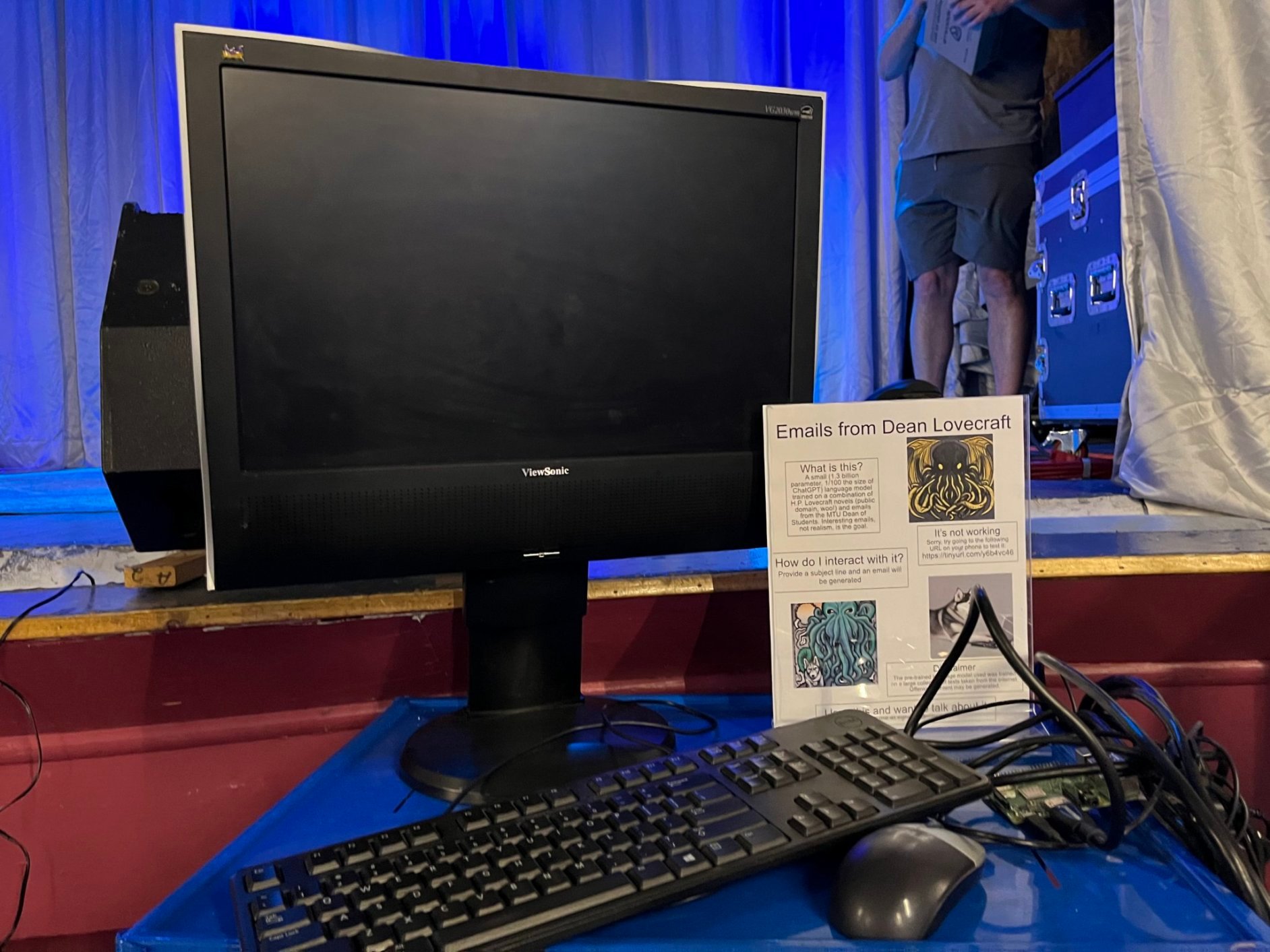
"Emails from Dean Lovecraft"
Evan Lucas
Most Innovative
"A language model was trained on the works of H. P. Lovecraft, as well as several years of emails from the MTU Dean of Students. This is an interactive work where users can supply a subject line and the model will generate an email inspired both by real Dean emails and the work of legendary horror author H. P. Lovecraft."
Artist Biography:
Evan Lucas is a PhD Candidate who mostly works with summarization and segmentation of dialogue.

"4000AD: A Portrait of Houghton" MidJourney Bot
Yogendra Kanchapu
Honorable Mention
"4000 AD: A Portrait of Houghton, Michigan is a digital artwork created using Midjourney, a powerful computational tool. The piece envisions a future version of Houghton, Michigan, with advanced technological advancements and a thriving community. Using midjourney the artist was able to generate a realistic depiction of the futuristic cityscape, complete with towering skyscrapers, bustling streets, and state-of-the-art transportation systems. The piece showcases the incredible potential of computational tools in art, as well as the power of imagination and creativity in envisioning a brighter future. By showcasing a future world that is both aspirational and attainable, "5000 AD" encourages viewers to consider the possibilities of what lies ahead and how technology can play a role in shaping a better tomorrow."
Artist Biography:
Yogendra Kanchapu is a dedicated pharmacist and majoring student at Michigan Tech University in Houghton. With a strong academic background in pharmacy and extensive experience in the field, Yogendra is passionate about providing exceptional patient care and ensuring the safe and effective use of medications. He has demonstrated outstanding leadership and teamwork skills, and is committed to continuous learning and professional development. His drive and commitment make him a valuable asset to any organization.

"Visualization of a Partition Zeta Function" Mathematica Notebook
Michael Elegah
Honorable Mention
"This computer-generated image is one of the first results in my study of partition zeta functions, in a number theory project with Dr. Cecile Piret and Dr. Robert Schneider. The Riemann zeta function is a central function in complex analysis, and is at the heart of the greatest open problem in number theory, the Riemann Hypothesis that conjectures a beautiful pattern for the roots of the function. In my MS work, I am studying a generalization of the zeta function discovered by Dr. Schneider, derived from integer partitions in combinatorics. With Dr. Piret, I used Mathematica software to make a 3-D plot of these partition zeta functions for the first time ever. Surprisingly, I observed even more beautiful patterns seem to exist with the distribution of the roots."
Artist Biography:
An international student from Nigeria and a Mathematics Major who is optimistic, open-minded, adaptive, and a quick learner interested in Discrete Mathematics and Combinatorics, currently having my Masters degree in the department of Mathematics, specialization in Combinatorics.

"000" Digital Art
Anonmyous
"People tend to be very nostalgic for old concepts. That is why the save button still looks like a floppy disc, and the trash on your desktop looks like an actual trash bin. Especially in the digital world, progress is made so fast that many of the initial terms and ideas are dragged on regardless of being outdated. Although coding languages eliminate the need to write in binary form, coding is still portrayed as a sea of 0s and 1s in movies and other forms of media as an act of nostalgia for early digital progress."
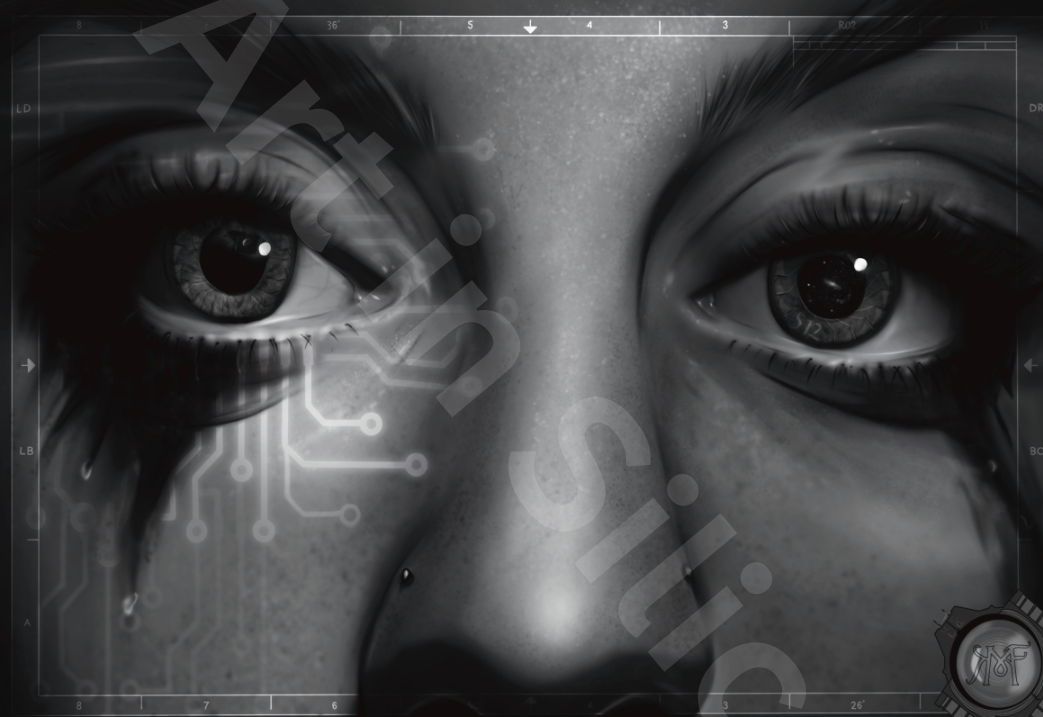
"My Friend Cambry, the Lighting Designer" iPad 10.2/ProCreate
Mary Kozmor
"My Iris-focused portrait hints towards the inner workings between a Lighting Designer and the Technology they use to help express a scene or an idea. I used personal references as a way to capture this specific patch between visionary and practical application. There are many layers to this, I wish I had a magic sheet to explain all 10 hidden symbols but I'll leave that up to you to find and decipher them…."
Artist biography:
Mary Kozmor is a Digital Artist who lives in Hancock, Michigan. Throughout her life, Mary has been intrigued by storytelling, and how everything is interconnected. The interest was cultivated during her teenage years and further developed during her time in college where she studied Theatre Production. Because of her background in theatre, Mary uses allegories and many symbolic details to convey a story or an idea through her works. Her natural affinity is for nature, particularly the cosmos and the sea. She pays homage to them by adding them to almost all of her works...
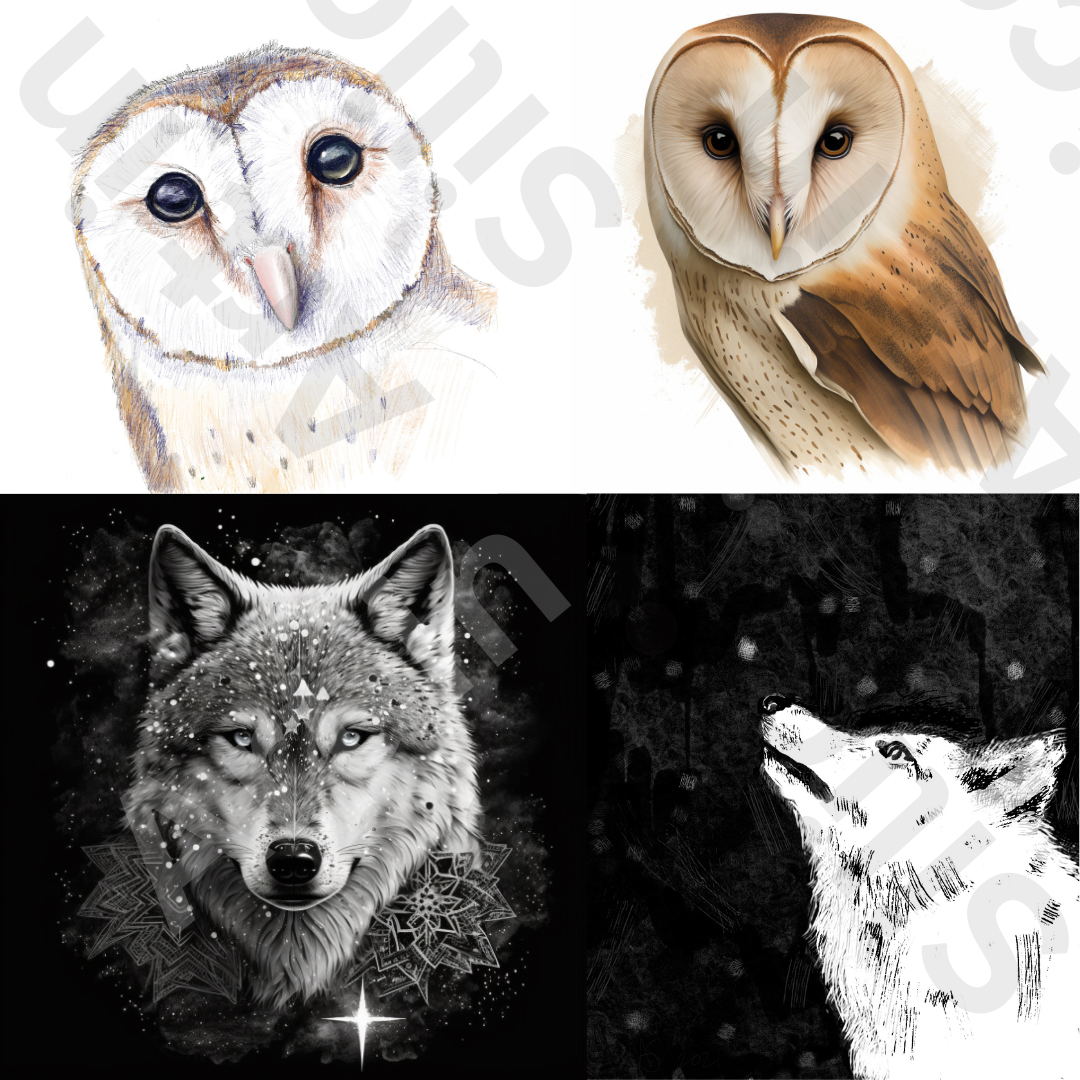
"AI Interprets Illustration" ProCreate/Midjourney Bot
Amanda Stump
"I created digital illustrations using the ProCreate program on a iPad/iPencil. I used the Midjourney text to image program to then create an AI interpretation of my drawings. I chose two illustrations that are more on the "classic" end of scientific illustration (owl and raven) and two that are more imaginative (wolf in snow and my interpretation of Bunnicula from the children's book of the same name) to see how AI would differentiate. Text prompts used for AI: Owl: "barn owl face Michigan scientific illustration"; Raven: "crow raven head neck scientific illustration"; Wolf: white coyote head snow wolf dark night snow"; Bunnicula: "Bunnicula vampire rabbit black white."
Artist Biography:
Amanda Stump trained in Scientific Illustration at the University of Michigan, and is now an Associate Director for Research Development and a PhD student in forestry at MTU. Her interests include the intersection of science and art and thoroughly annoying hiking companions by taking pictures of moss and counting tree rings.
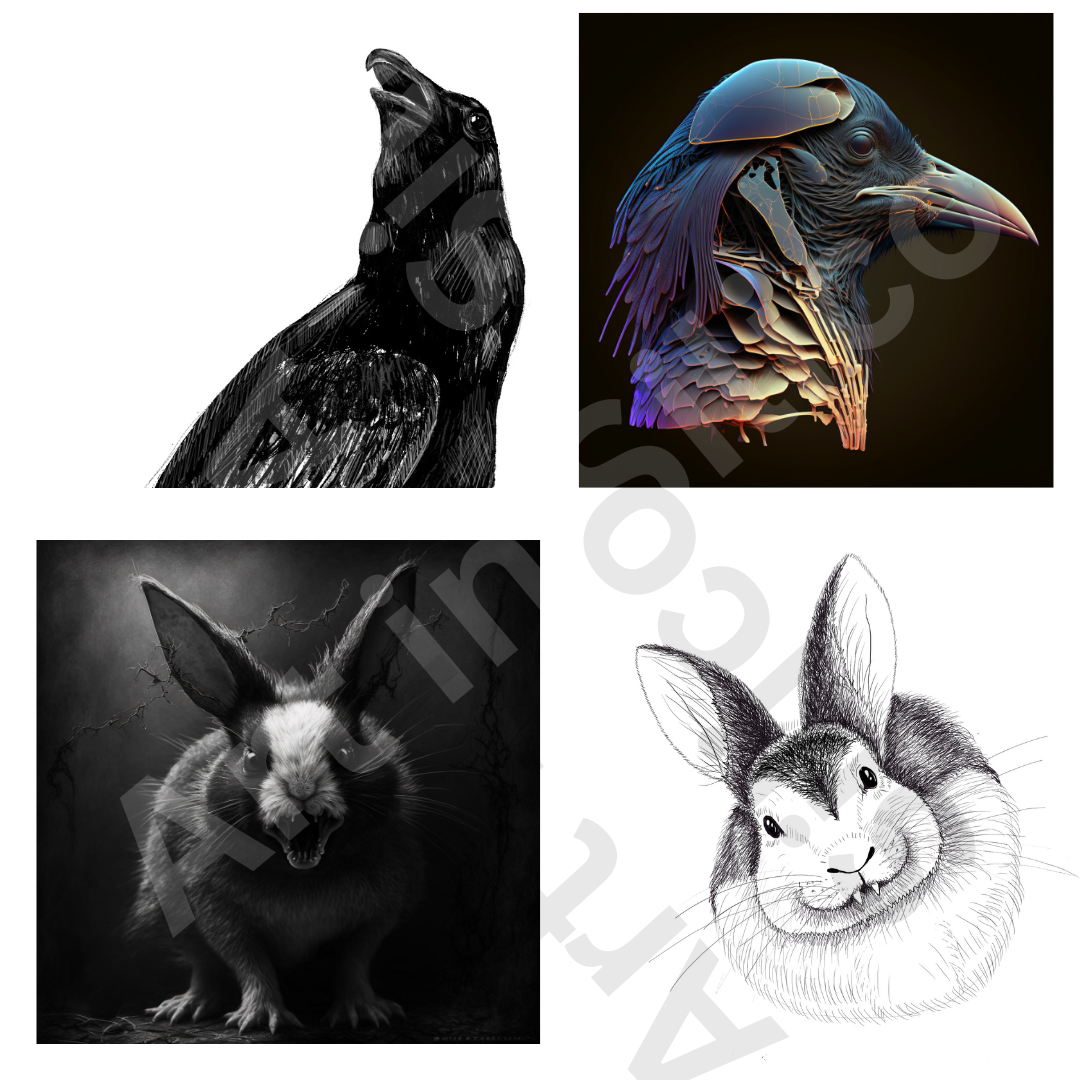
"AI Interprets Illustration" ProCreate/Midjourney Bot
Amanda Stump
"I created digital illustrations using the ProCreate program on a iPad/iPencil. I used the Midjourney text to image program to then create an AI interpretation of my drawings. I chose two illustrations that are more on the "classic" end of scientific illustration (owl and raven) and two that are more imaginative (wolf in snow and my interpretation of Bunnicula from the children's book of the same name) to see how AI would differentiate. Text prompts used for AI: Owl: "barn owl face Michigan scientific illustration"; Raven: "crow raven head neck scientific illustration"; Wolf: white coyote head snow wolf dark night snow"; Bunnicula: "Bunnicula vampire rabbit black white."
Artist Biography:
Amanda Stump trained in Scientific Illustration at the University of Michigan, and is now an Associate Director for Research Development and a PhD student in forestry at MTU. Her interests include the intersection of science and art and thoroughly annoying hiking companions by taking pictures of moss and counting tree rings.
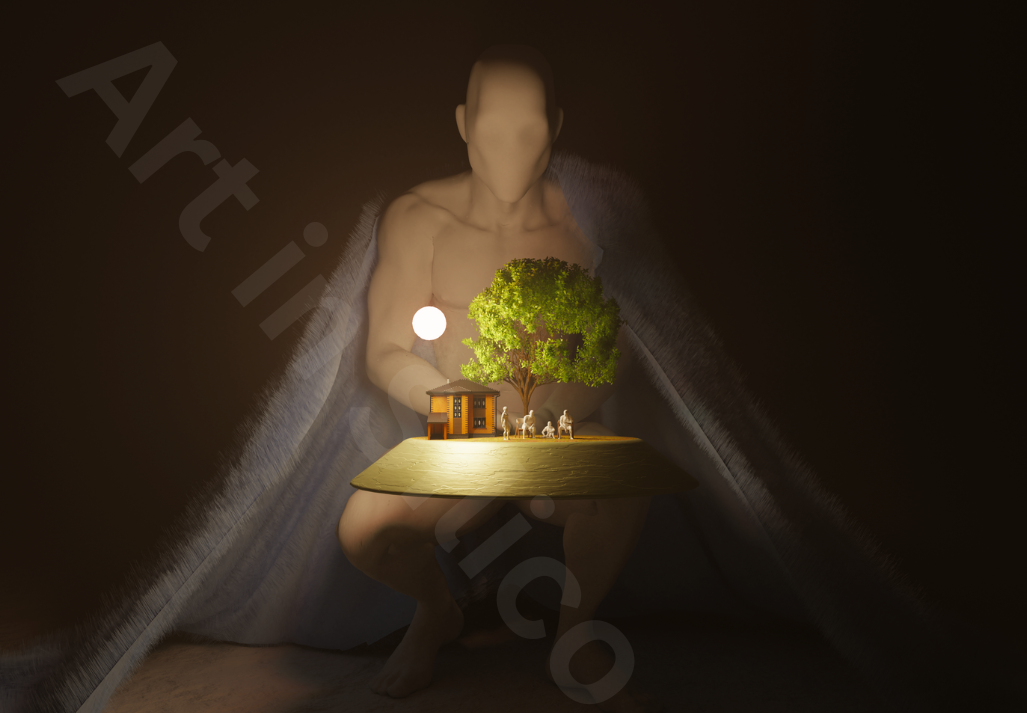
"The Warmth of the Past" Blender, Sketchfab, Daz Studio 3D, Photoshop
Shivayogi Akki
"Life is a tapestry woven of the moments we share and the connections we make. It's the key that unlocks the beauty of life, though sometimes it can be challenging to find. But therein lies the essence of my art: capturing the little things that make life so grand. My works depict faceless people, for we are all on this journey together in the grand scheme of things. My art is a celebration of these moments, elevating them to the status of art and reminding us of the simple, yet profound, connections that bind us together as humanity.
Artist Biography:
Shivayogi Akki is a Master's Student in Mechatronics, Robotics, and Automation Engineering at Michigan Tech. He enjoys working on Digitial art and Traditional portrait art.
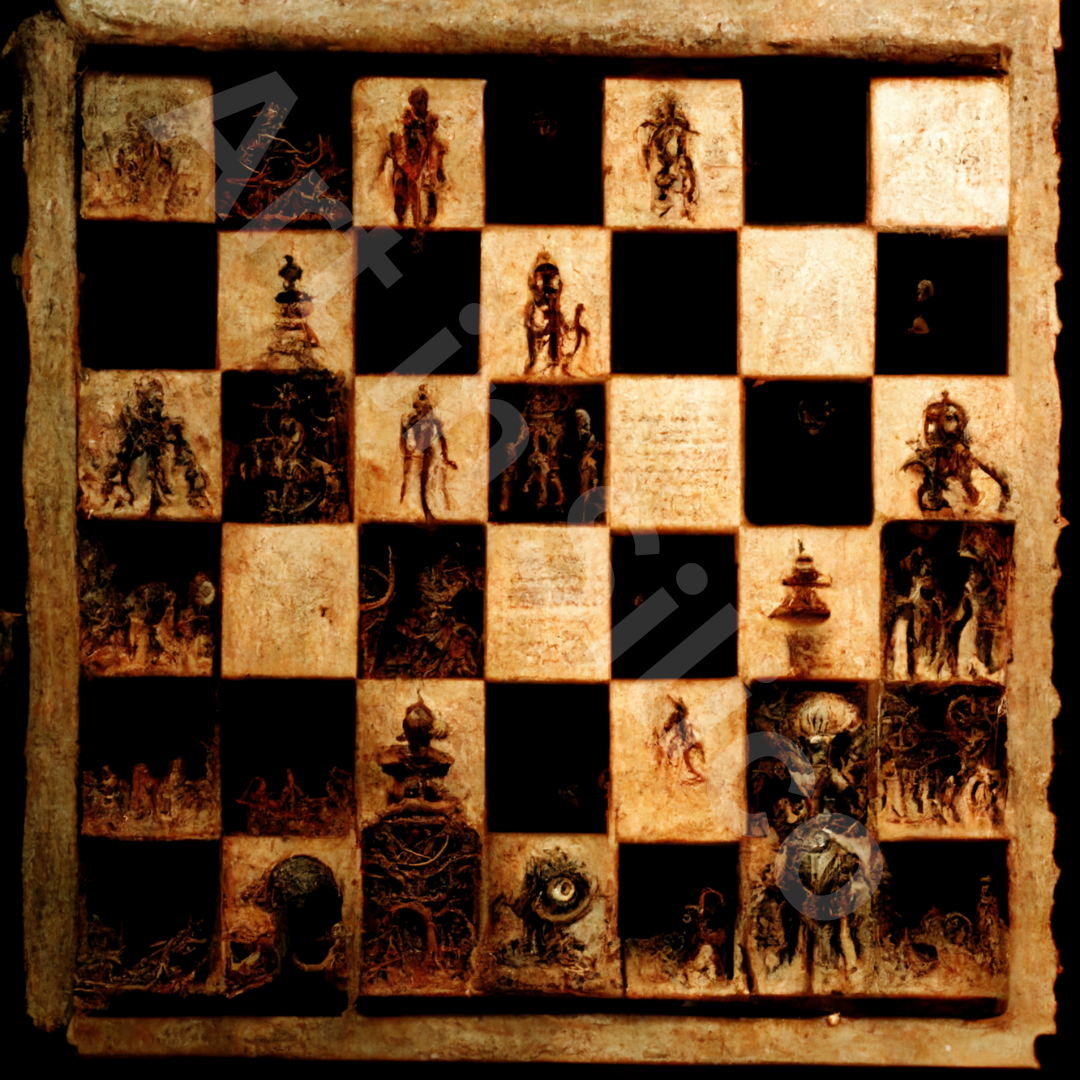
"Posthuman Warfare" iPad, Midjourney Bot
Stefka Hristova
"The Text-To-Image AI Generator Midjourney imagining posthuman drone warfare. In this project, I am interested in exploring the biopolitical implications of probability in the context of algorithms and war. Military training has further shifted to training the algorithms themselves in order to make decisions autonomously. Whereas for human soldiers where training happens for the purposes of improving in real-life, military algorithms are faced with training data that prepare the algorithms to operate with testing data. I seek to illuminate how are models of probability justified visually as well as discursively in the contemporary moment in relation to human-machine war assemblages."
Artist Biography:
Dr. Stefka Hristova is an Associate Professor of Digital Media at Michigan Technological University.
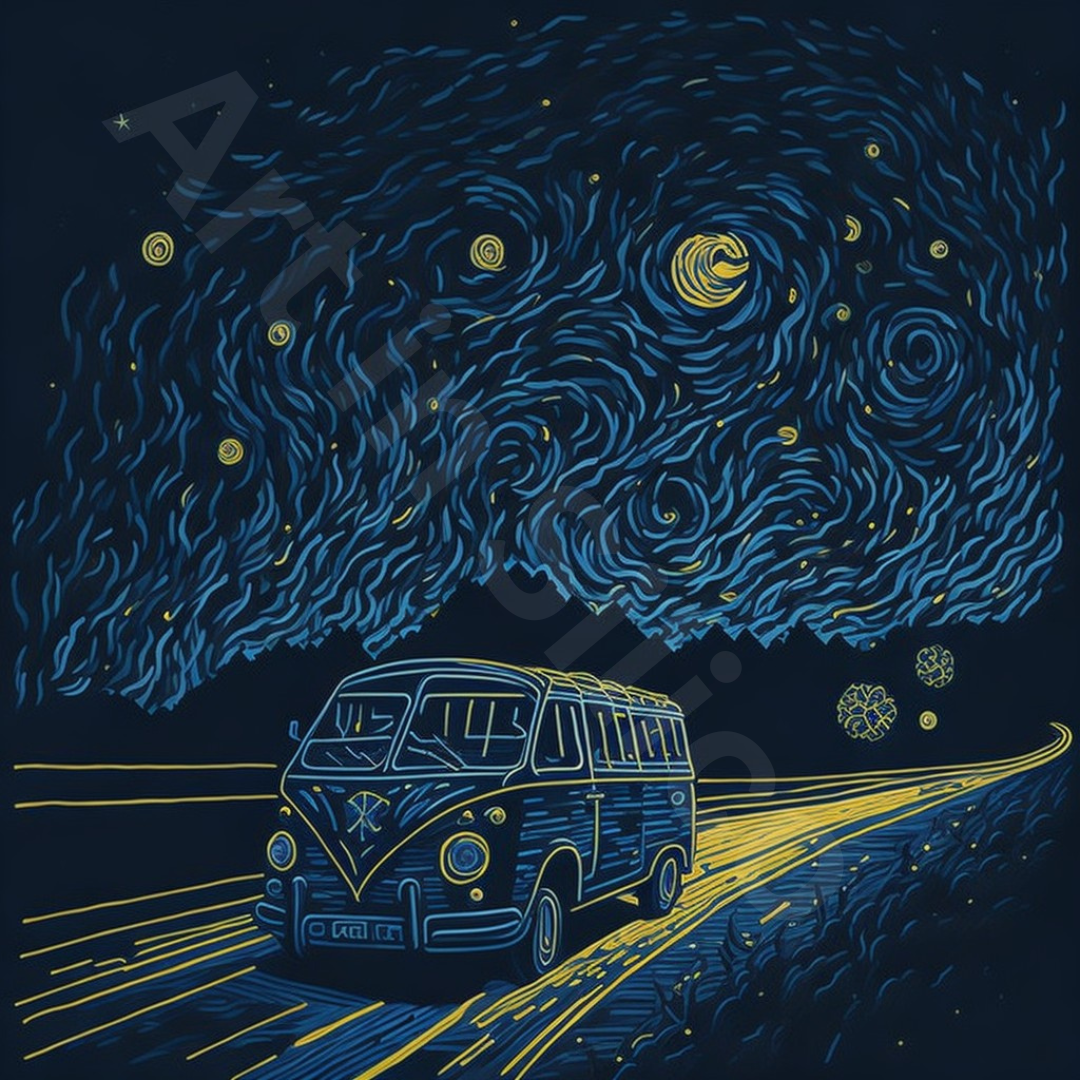
"It's a Van Go" Digital art
Jordan Ewing
"This was inspired by my childhood road trips every summer with the family. We would drive all day and well into the night on long stretches of road in the middle of nowhere and along the way getting to see the beautiful night sky lit up with starlight. Van Gogh's style of painting also adds a level of movement through the brush strokes to go with the on the road theme. Finally, all the puns my father told us on those trips helped create this piece, "It's a Van Go".
Artist Biography:
Jordan Ewing is a Computational Science & Engineering Ph.D. candidate at Michigan Technological University. He presently has two master’s degrees, one in Physics from Wright State University and another in Data Science from Michigan Technological University. His research is in remote sensing application to site characterization. He mainly focuses on thermal and hyperspectral imaging to investigate soil properties for mobility using machine learning and deep learning. His research applies to the development of the Next Generation – NATO Reference Mobility Model (NG-NRMM) and is a recipient of the DoD SMART Scholarship.
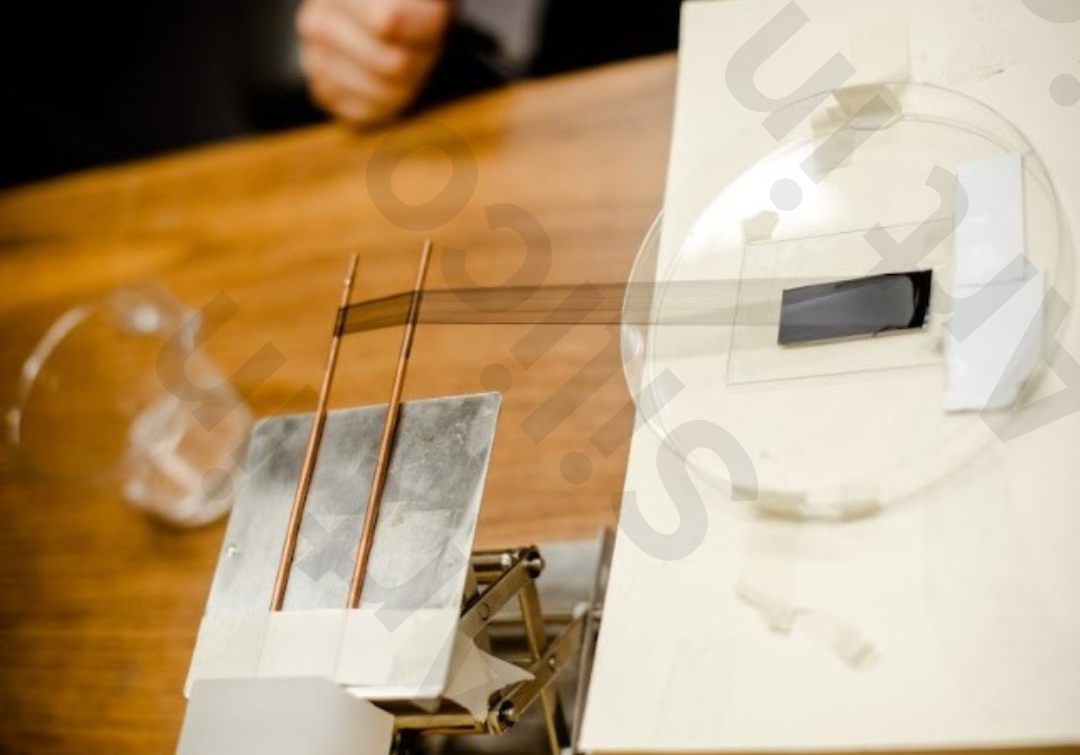
"Carbon Nanotube Speakers"
Steven Senczyszyn
"Carbon Nanotube speakers are unique in the fact that they generate sound through rapid fluctuations in surface temperature, but as a result of this, the output frequency is doubled compared to the input signal. Various methods of offsetting this frequency doubling will be displayed. Various properties of underwater acoustics will also be demonstrated and interactive."
Artist Biography:
I am a research engineer at the Great Lakes Research Center specializing in acoustics and underwater acoustics.
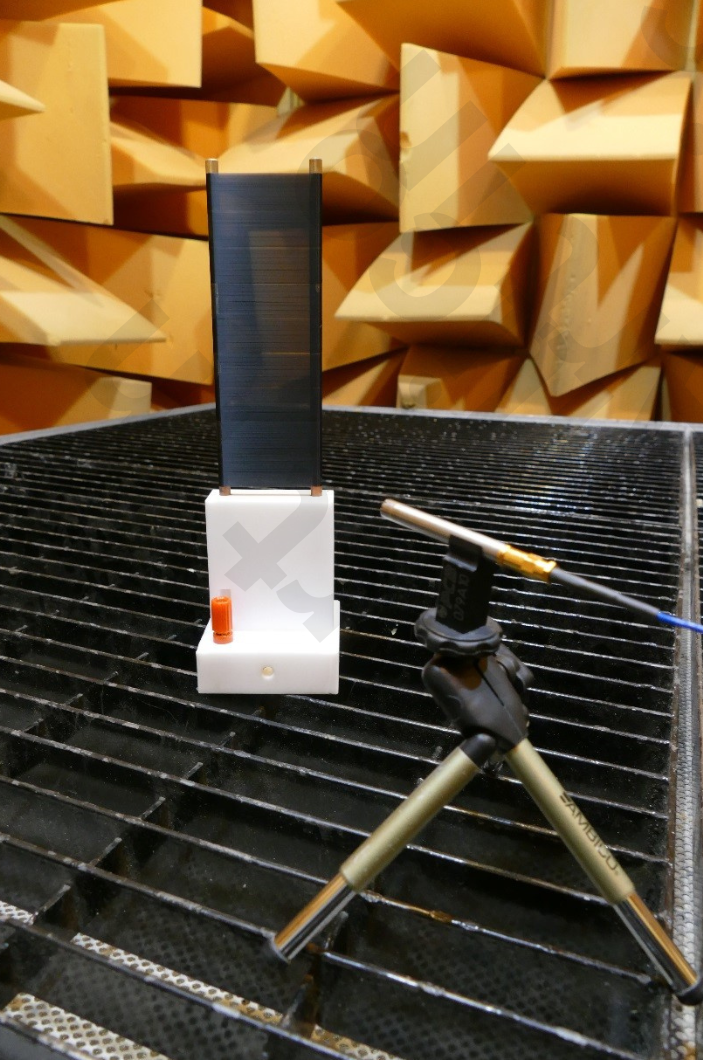
"Carbon Nanotube Speakers"
Steven Senczyszyn
"Carbon Nanotube speakers are unique in the fact that they generate sound through rapid fluctuations in surface temperature, but as a result of this, the output frequency is doubled compared to the input signal. Various methods of offsetting this frequency doubling will be displayed. Various properties of underwater acoustics will also be demonstrated and interactive."
Artist Biography:
I am a research engineer at the Great Lakes Research Center specializing in acoustics and underwater acoustics.
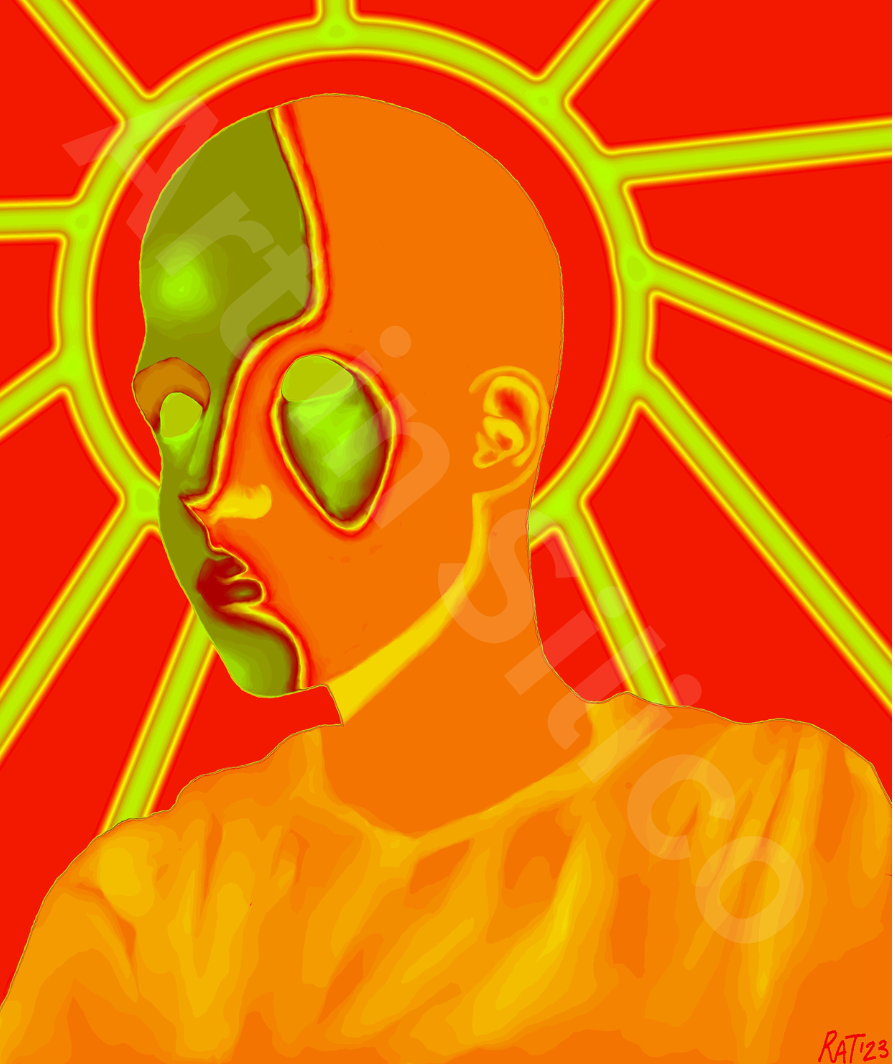
"Reckoning" Microsoft Surface Pro, Microsoft Surface Pro Stylus, Krita
Noah Stewart
"Using thousands of pixels, Noah seeks to address modern society’s dependence on technology by creating a visual representation of our relationship with it, which he compares to a religious one. He suggests that, in a way, technology has taken the place of divinity. Our reliance on technology is a new form of worship, we look to technology for answers, and we look to technology to guide us. By demanding so much of a machine, Noah claims that we have essentially deified it."
Artist Biography:
Noah Stewart is a contemporary artist and high school student who enjoys many art forms, from digital to traditional. His focus tends to lie in digital photography, digital art, and colored pencil drawing, though he enjoys dabbling in other mediums from time to time. Raised in the Keweenaw, Noah enjoys wildlife photography in the summer and drawing in the winter. There’s no place Noah would rather be than behind a camera or in front of an easel.
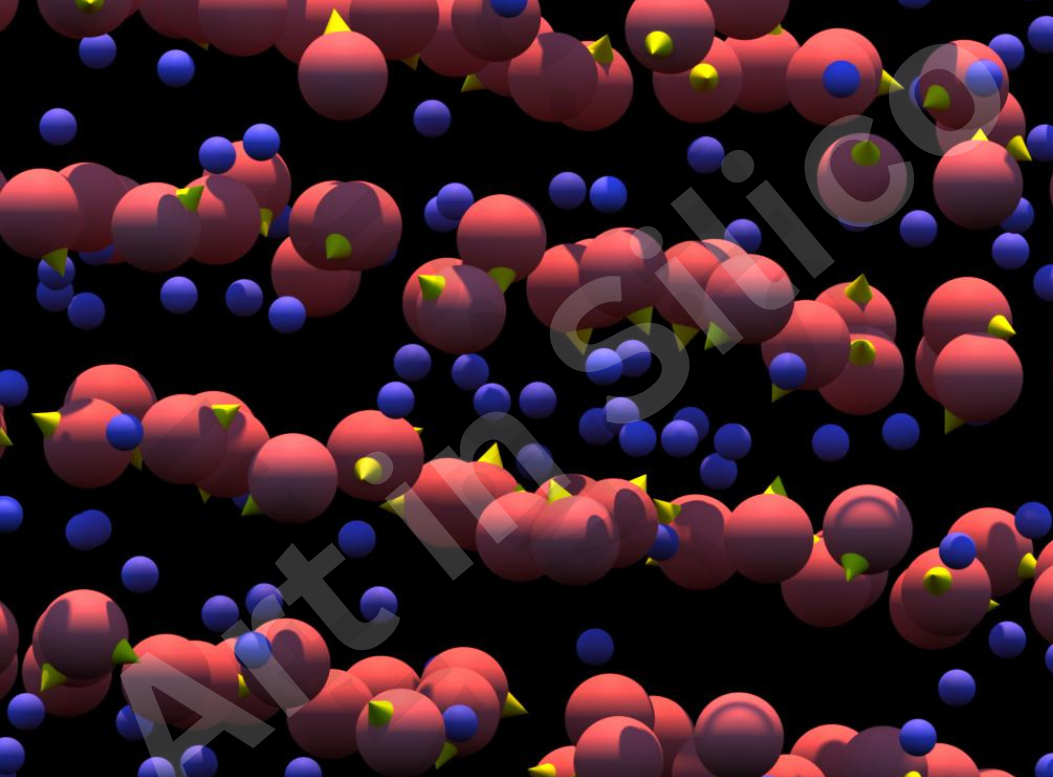
"Dance of Domains" LAMMPS Molecular Dynamics software and OVITO Visualization Tool
Jester Itliong
Technical Description: This in silico artwork is a snapshot of a simulation of a coarse-grained ethylammonium nitrate ionic liquid system. It illustrates the possibility of microphase separation in a pure and homogenous ionic liquid where the ethylammonium cations (big red spheres with yellow arrows) and the nitrate anions (small blue spheres) segregate into layered domains. It was hypothesized that this scenario occurs when the asymmetry between the sizes of the ions in the liquid is high and when the liquid is composed of polar parts (i.e. ethylammonium cations, yellow arrows represent polarity) and non-polar parts (i.e. nitrate anions, absence of arrows means no polarity). Nevertheless, the major driving force for microphase separation in ionic liquids remains largely mysterious, thus becoming the focus of an ongoing research.
Artist’s Statement: “The Dance of Domains” is a vibrant digital artwork that explores the intricate and mesmerizing patterns that emerge from the phenomenon of microphase separation. The black background illuminates the alternating layers of pale red and electric blue colors. The perfectly spherical shapes with added shadows create a flowing illusion that seems to weave their way through space. The pointing arrows establish an intricate choreography that results to either bold or dramatic outcomes. The overall effect is one dynamic movement that is alive and pulsing with energy. “The Dance of Domains” is a celebration of the beauty and complexity of the microphase separation, a reminder that even the most microscopic of realms, there is hidden beauty and elegance waiting to be discovered.
Artist Biography:
Jester is a PhD candidate in the Physics Department at Michigan Tech. He was born and raised in Manila, Philippines where he found his passion in science and art. He was the first in his clan to finish college and the first to pursue graduate studies. He may be considered as the first and only scientist in his family. He taught in two universities in the Philippines before starting his doctorate. He loves to sketch and sings different music genres during his spare time. He is always in awe of the existence of symmetry in physics and art.
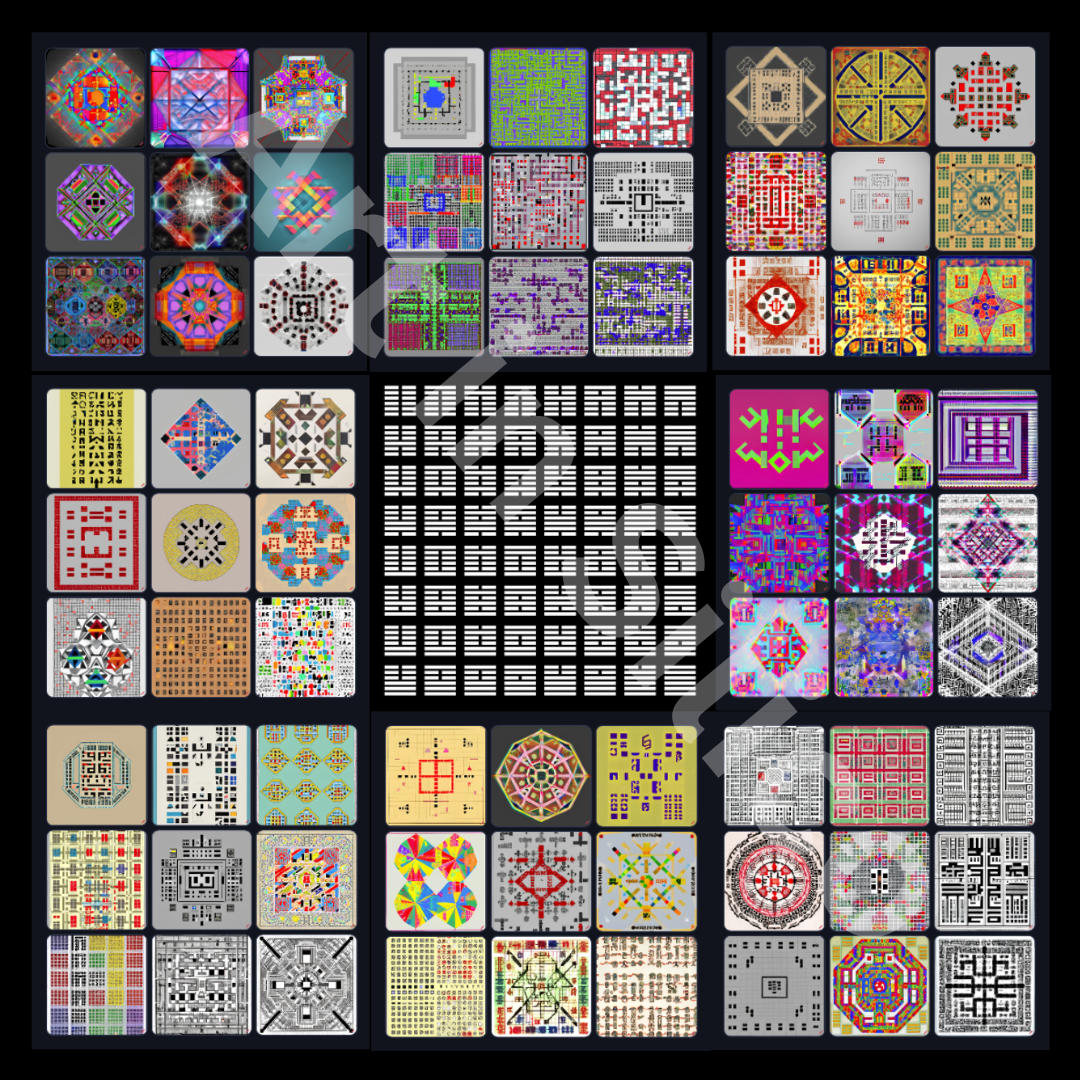
"Digital Changes" OpenAI Craiyon
Robert Schneider
"I prompted OpenAI’s Craiyon software to produce interpretive images of aspects of the ancient Chinese philosophical text, the I Ching or Book of Changes, which has interested me throughout my life. I printed the images as photographs, along with a table of symbols from the I Ching, and arranged them algorithmically according to an ancient magic square. The AI-generated imagery ripples with patterns inspired by the mathematical diagrams characterizing the text. The mythology of the I Ching begins with prehistoric Emperor Yu (2200 B.C.E.) discovering the Lo Shu magic square – a mathematical diagram similar to modern-day Sudoku – and other enigmatic symbols on a tortoise shell. A complex oracular system developed from these symbols: users ask questions of the I Ching text and perform an algorithm to derive "hexagrams," mathematical figures composed of six solid or broken lines yielding 64 possible permutations, from which they glean inspiration, advice and wisdom. A secular interpretation of the oracle might be that it is an ancient AI. Circa 1700 C.E., German mathematician G. W. Leibniz tried to decode the I Ching. Leibniz interpreted hexagrams as numbers; working through the I Ching, he invented the binary number system used by digital computers. The role of the ancient oracle in sparking modern computer science – this conversation of civilizations over millennia – is, to me, the most inspiring storyline in human history. Since the early dawn of prehistory, the patterns of mathematics continue to unfold, to guide us, to connect us to invisible intelligences."
Artist Biography:
Robert Schneider is a mathematician specializing in number theory and combinatorics, on the Mathematical Sciences faculty at Michigan Technological University; he was previously a professional musician, composer and record producer. Along with Michael G. Maxwell in Visual and Performing Arts, Schneider is co-founder of the MTU Mathematics and Music Lab, whose goals are to produce futuristic works of music and installation art, explore music theory using mathematics, and invent new audio hardware and software.
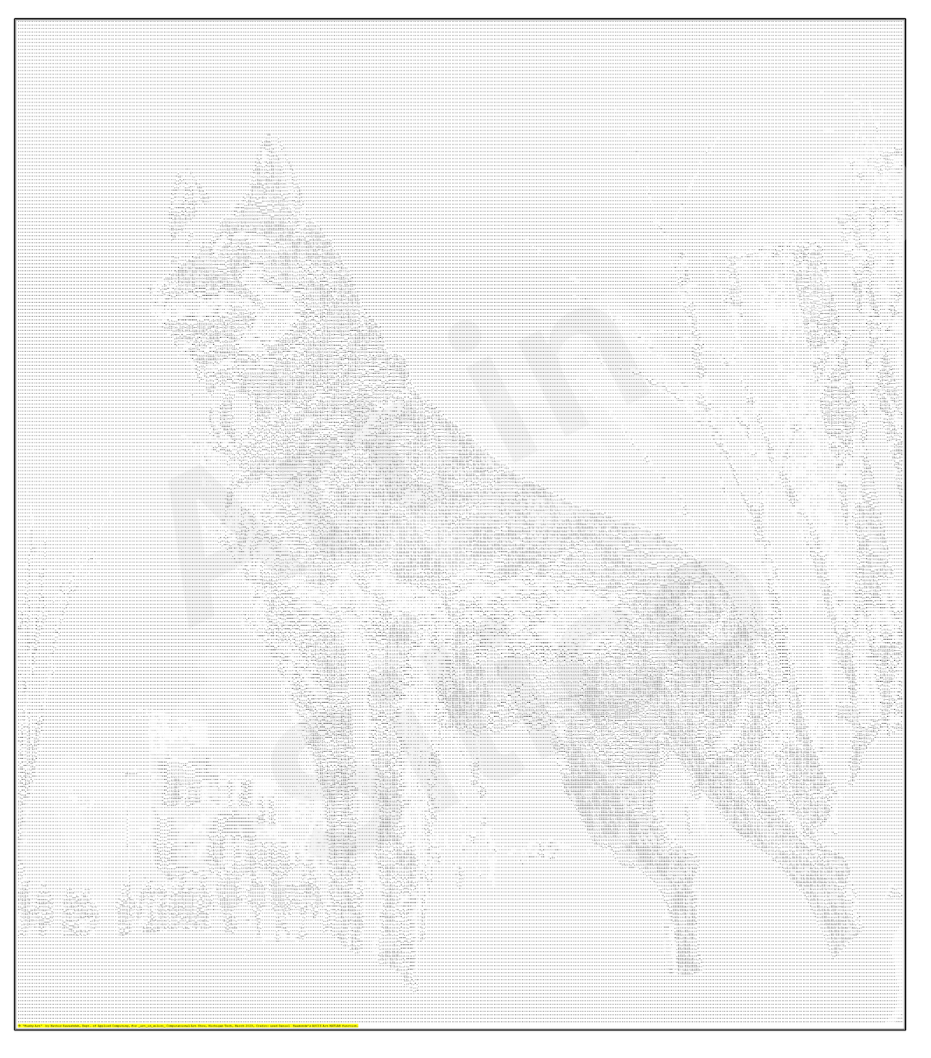
"A Digital Classic" ASCII Code
Nathir Rawashdeh
"ASCII Art is one of the earliest ways computers generated artful graphics. The ASCII Code was developed 60 years ago in 1963 to define the characters we see in our keyboards as numerical values that can be sent over a digital communication link. This piece seeks to remind us that computers, and perhaps we as humans, construct complex meaning from basic building blocks."
Artist Biography:
Nathir Rawashdeh has been an Assistant Professor in the Department of Applied Computing at Michigan Tech, since 2019. Prior, he was an Associate Professor in the Mechatronics Engineering Department at the German Jordanian University, where he spent 10 years. His industrial experience includes 5 years in software development. He was a senior software engineer in the Laser Color Science and Imaging Department, at Lexmark International, Inc. in Lexington, Kentucky, and with MathWorks, Inc. in Natick-Massachusetts working on software quality engineering for embedded DSP programming using MATLAB and Simulink. His research focus is on unmanned vehicle perception, image analysis, control systems, and mechatronics. Dr. Rawashdeh is a Senior Member of the IEEE. He has worked on projects funded by the NSF, Ford, and the European Commission.
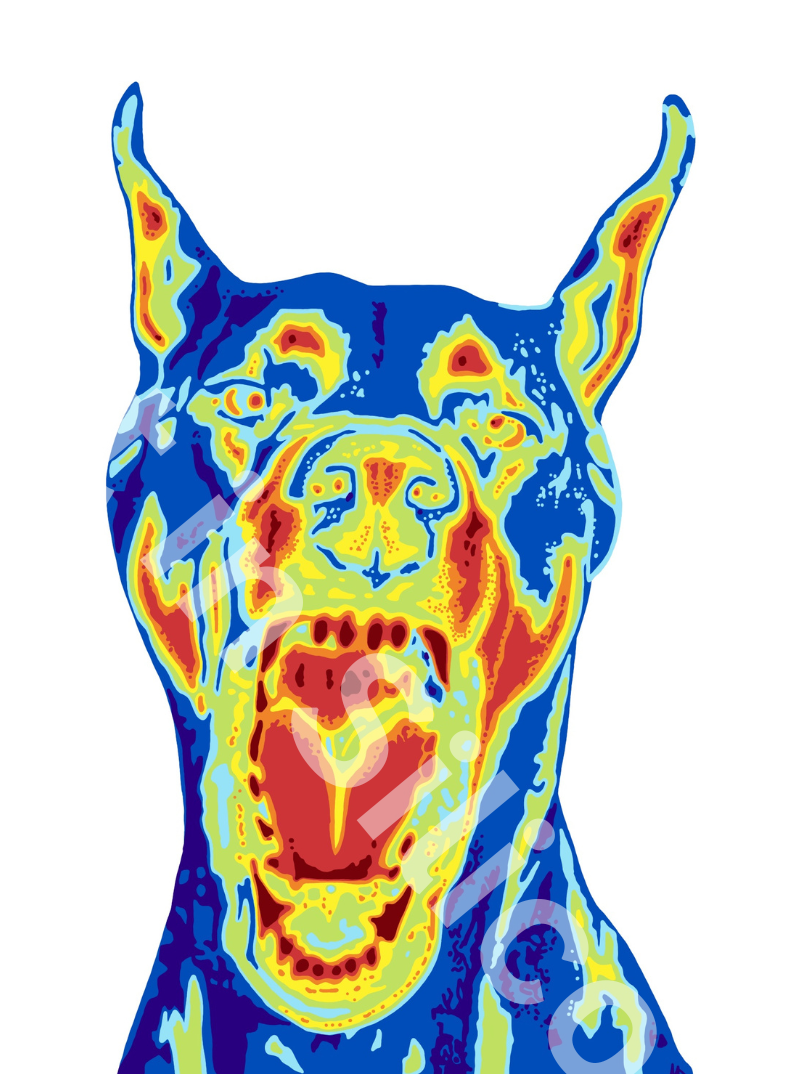
"Thermal Imaging"
Anonymous
"Infrared templates are created by submitting visible images and using infrared generative adversarial networks (I-GANs) to build a model that can be used for improving the accuracy and precision of infrared imaging. Generated images can be used to reduce the time needed to process, the amount of calculations required, and the cost of collecting images. This image was drawn, not generated, however it serves as an example of an infrared image."
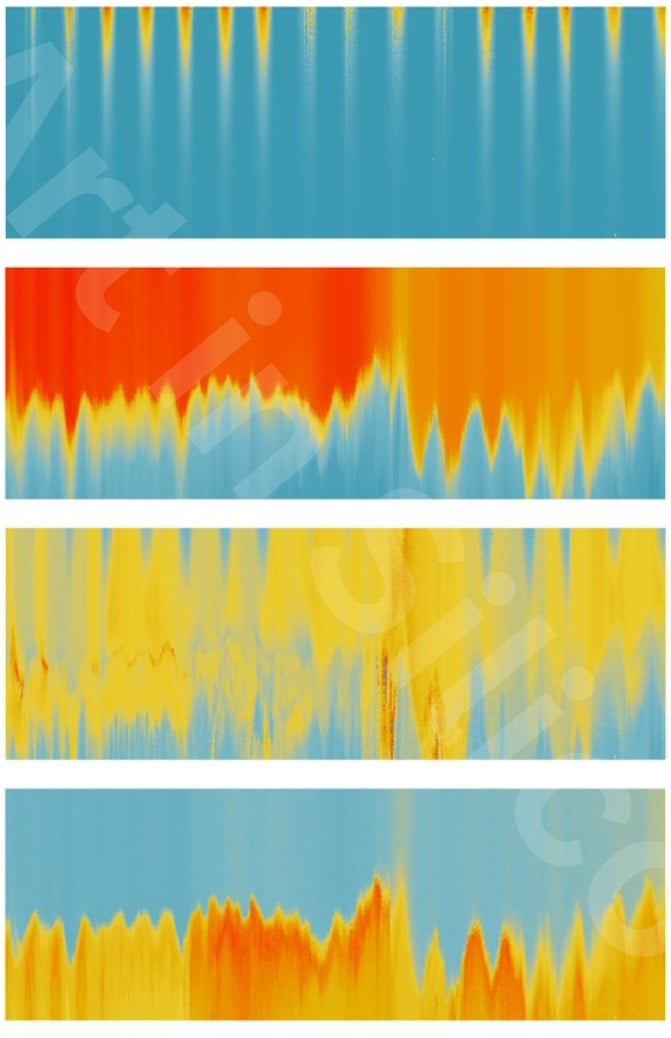
"Proxy Planet"
Hayden Henderson
"It’s hard to say where you’re going if you don’t know where you’ve been - especially in regard to our planet in the face of a changing climate. Visualized here is sensor data from a diving autonomous underwater vehicle, remotely piloted over hundreds of nautical miles back and forth across Lake Michigan. Many important physical and biogeochemical parameters are able to be measured through sensor methods relying on optical proxies (e.g. chlorophyll-a for biological activity) or physical material characteristics that vary with changing environmental conditions (thermistors for temperature). The mosaic of measurements observed here relies on postprocessing computation to derive interpolations between observed data, providing a complete spatial picture of such parameters - successfully documenting important seasonal characteristics over this weeks-long deployment of an advanced technology platform."
Artist Biography:
I am an Environmental Engineer by education, and a Marine Engineer by stubbornness and an engrained interest in pursuing applying technology and novel methods to understanding the physical environment, namely the Great Lakes.
